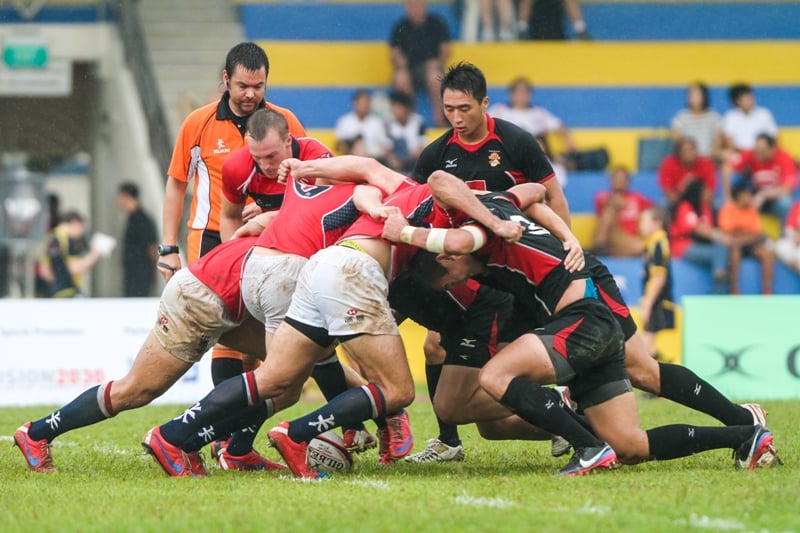Basic Rugby Terms
Click here to get your tickets to the HSBC Singapore Rugby Sevens!
For those new to the game, rugby can seem confusing with the various positions, infringements and formations. Don’t worry, In this article, we’ll break down some of the most common terms that you’ll see in rugby union.

Image credit: Dyan Tjhia/SportSG
Usually the bigger and heavier players, there are eight forwards in the starting 15 of a rugby team. Numbered 1 to 8, the forward pack consists of a hooker in between two props who makeup the front row of the scrum; the two locks who make up the second row and a back row trio made up of flankers and the no.8.
Backs
The backs or three-quarters are usually the fastest players on the team who wear jersey numbers 9 to 15. While the forwards set up the base of attacks by securing possession, the backs primary role is to find a way of using the ball won by the forwards to score tries.
Scrum
The scrum is a method of restarting play when the ball has been knocked on, gone forward,there’s been an accidental offside or when the ball is trapped in a ruck or a maul. Forwards fromeach team will proceed to bind together into three rows and push against each other to win control of the ball. The attacking team’s scrum-half feeds the ball into the scrum while thehooker uses his foot to win possession of the ball. Scrums are formed at the place where infringements occur and cannot be within 5 metres of the touchline or goal-line.
Maul
A maul is formed when at least three players from either team are standing up in contact,challenging or driving the player with the ball. The rolling maul is all about strength and power and when practiced to perfection is a potent attacking tool to score tries or win penalties from
Ruck
The ruck is similar in principle to the maul but instead of the ball being held up by players, it is on the ground.
Lineout
A line out is formed when the ball goes out of the field of play. The hooker of the attacking team will proceed to throw the ball straight through the middle of the line out after identifying the “jumper”, or player who will be lifted into the air in order to receive the ball. Players involved in the line out will have to stand within the 5 metre and 15 metre lines and a minimum of two players from a team are required to form a line out. The attacking side determines the number ofplayers in the lineout.
Advantage
The advantage rule is the period of time after an infringement has occurred where the refereeallows the game to continue, giving the non-offending side an opportunity to gain a territorial ortactical advantage. If the referee deems this has been achieved, he will communicate,“advantage over” and the game carries on. However, if no advantage occurs, the referee stopsplay and awards the original foul.
Blood replacement
A blood bin or replacement occurs when a player sustains a cut and is bleeding badly. At thistime, a replacement is allowed while the injured player receives treatment for his cut and isallowed back to the field if he/she returns within 15 minutes. Once this time elapses, thetemporary replacement becomes permanent and the injured player is not allowed back onagain.
To receive the latest updates on the happenings in the Singapore sports scene, or to find out more about some of the latest programmes on offer at ActiveSG, like our Facebook page here.





![ActiveSG Academies and Clubs Logo (Solid Colour)[8647]](https://www.activesgcircle.gov.sg/hs-fs/hubfs/ActiveSG%20Circle%202023Theme/images/ActiveSG%20Academies%20and%20Clubs%20Logo%20(Solid%20Colour)%5B8647%5D.png?width=150&height=65&name=ActiveSG%20Academies%20and%20Clubs%20Logo%20(Solid%20Colour)%5B8647%5D.png)



-01.png?width=200&height=141&name=Team%20Singapore%20Logo%20(Red)-01.png)



